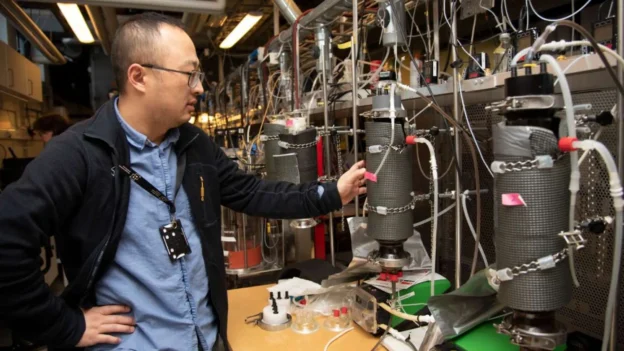NIBIO researchers and collaborators have designed a biofilm with the ability to transform carbon dioxide and carbon monoxide into high-purity biomethane. These thin layers of microorganisms operate under anaerobic conditions, capturing industrial gases and converting them into usable methane.
Biotechnology to introduce high quality breakthroughs
Likewise, the team led by Dr. Lu Feng documented in five scientific studies how these systems exceed 96 % purity in the methane produced. The focus is on bioaugmentation, a technique that introduces specific methanogenic microbes to improve CO₂ conversion.
Biofilm reactors offer remarkable stability against compounds that typically inhibit methanogenesis, such as hydrogen sulfide and ammonia. In controlled tests, systems without biofilms lost up to 30 % methane under the presence of H₂S, while reactors with biofilms maintained gas quality even at elevated concentrations.
The use of AnMBBR reactors also allowed the production of methane with high levels of ammonia, through the presence of Methanothermobacter, a microorganism with capabilities to harness hydrogen and CO₂ to generate fuel.
Tests with synthesis gas open the door to the utilization of complex waste such as plastics and woody biomass. Adding supplemental hydrogen increased methane production, although the excess upset the process balance, highlighting the need for precise control on an industrial scale.
Biofilm-based biotechnology represents a robust platform to valorize climate-affecting gas streams and convert them into renewable energy, contributing to emissions reductions and strengthening the circular economy.
Source and photo: NIBIO


